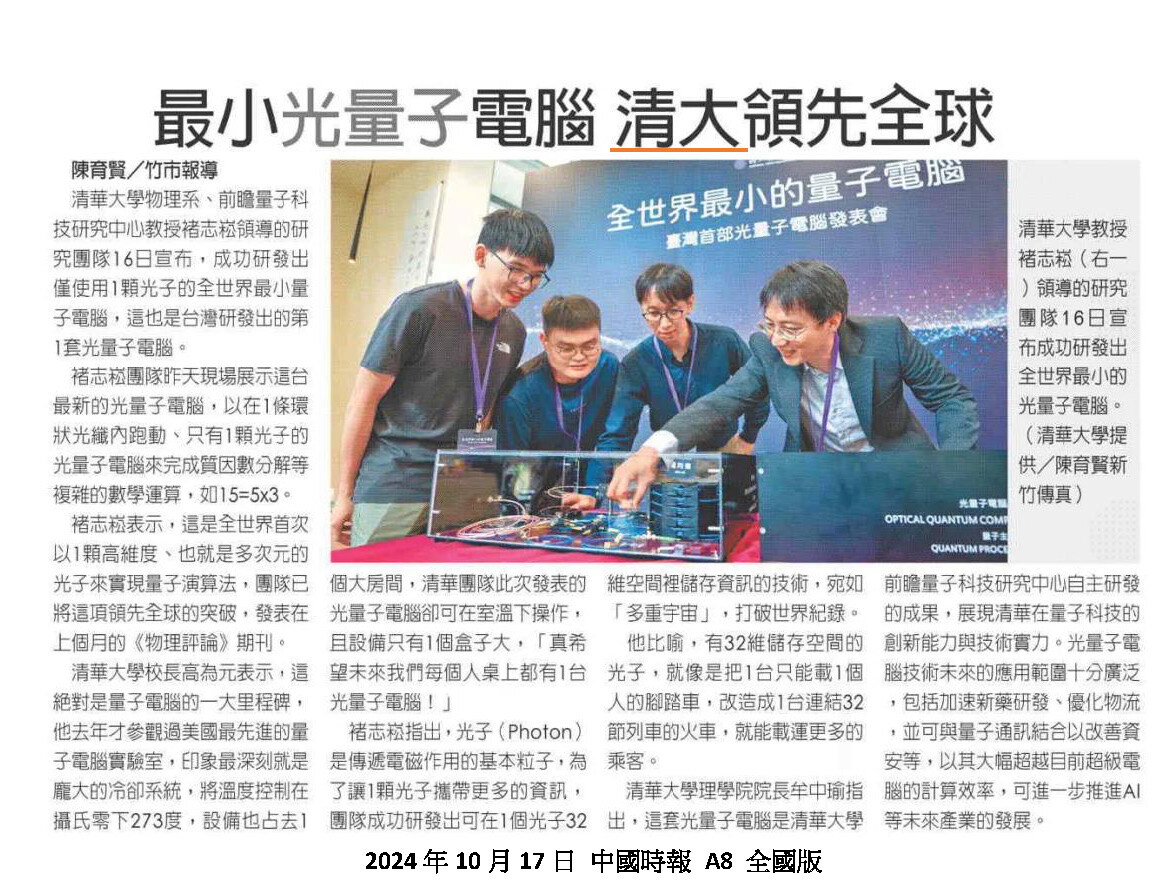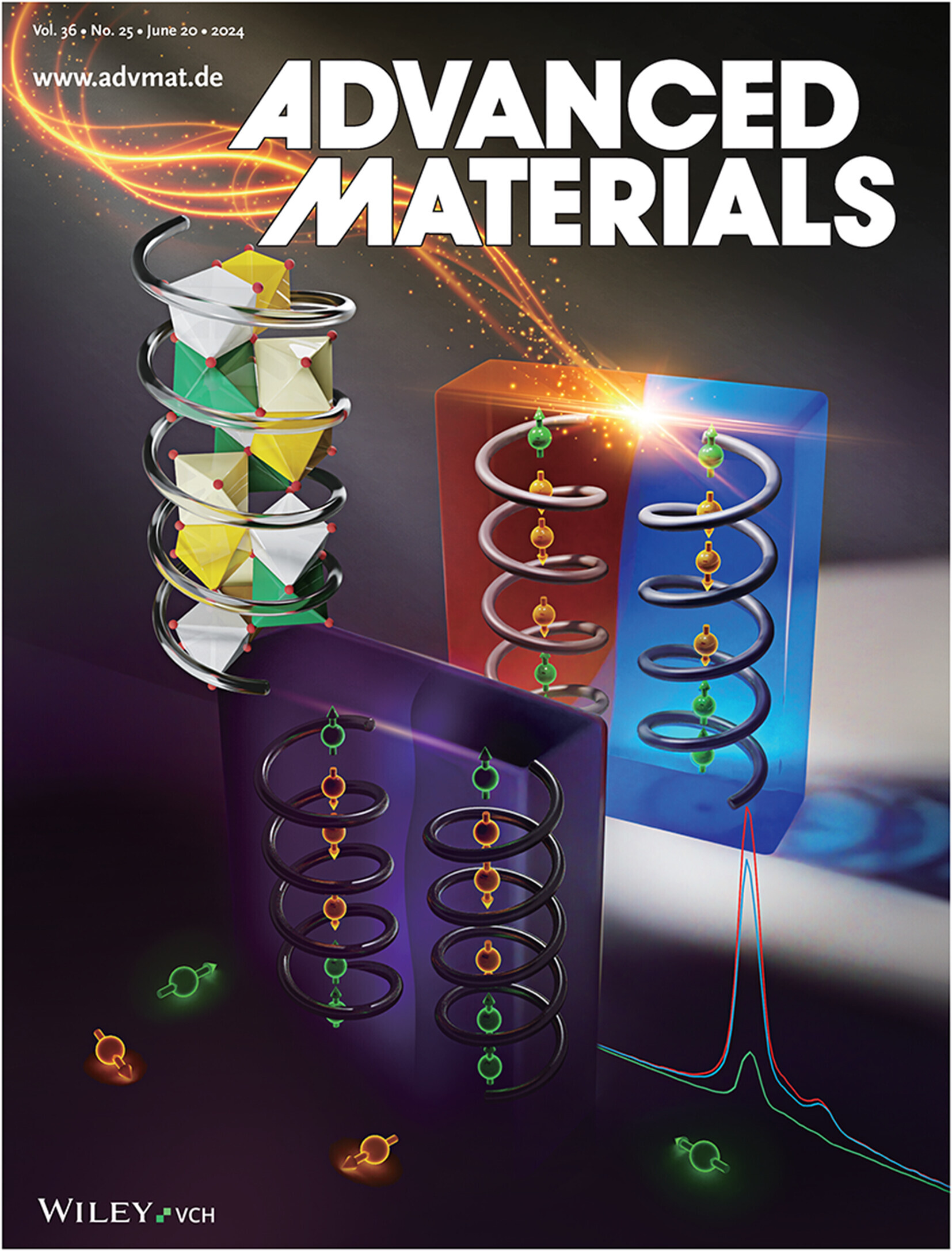Publication
In terms of academic research, the center members published 49 papers and 23 international collaborative papers in 2024, including 12 papers published in top journals (impact factor>9):
Nature 1
Advance Science 1
Nature Communications 3
Nature Nanotechnology 1
Advanced Materials 2
ASC Nano 1
Physical Review X 1
Nano Letters 1
Energy & Environmental Science 1
Important research results and breakthroughs:
1. In 2024, the center members published a total of 49 academic journal papers, including 12 papers published in top magazines (including Nature, Nature Communications, etc.).
2. The world's smallest quantum computer is realized by using only one photon to perform quantum prime factorization operations. It is Taiwan's first optical quantum computer and has found a new way to build quantum computers. Different from the mainstream construction currently pursued by the international community, its advantage is that it can be combined with quantum communication using optical transmission to form a quantum network, and it can be carried out at room temperature, which is a great breakthrough. In particular, this technology can be combined with current silicon photonic technology and integrated with classical computers. It has great potential for Taiwan to continue its advantages in semiconductor technology and is an opportunity for Taiwan to lead the development of quantum computers (Phys. Rev. Applied 22, 034003, 2024). This result has been reported by domestic and foreign media:


3. We successfully built Taiwan's first quantum device with six superconducting flux qubits, with a maximum T1 of 67 μs and an expected T2 of 134 μs. We also built a single 3D superconducting flux qubit with a T1 of 318 μs and an expected T2 of 636 μs, both of which are Taiwan's best records.
4. The quantum frequency converter (quantum frequency converter from near-infrared to telecom band) has an efficiency of 80%, which is currently the world's best record.
5. Member Ite Yu was invited to write a review article on four-wave mixing to produce two-photon light sources (Adv. Quantum Technol. 2024), in which the probability of producing pioneer single photons in a two-photon manner reached 82%, which is currently the world's best record.
6. Members Ite Yu and Chhih-Sung Chuu won the "2024 Future Technology Award" for their two-photon quantum light source with world record narrow linewidth and high-frequency brightness.
7. A room-temperature single-photon light source with adjustable brightness was realized using a wafer-level plasma array, with the luminescence efficiency increased 500 times to 4.5 × 106 counts/s. This method can be combined with semiconductor technology, and was selected as the cover article of Nano Letters 24, number 11.

8. The Quantum Materials Chung-Yu Mou's Group discovered the first new magnetic material with no net magnetic moment but strong optical rotation, which broke the traditional understanding of magnetic materials and was selected as the cover article of Advanced Materials 36, issue 25.

